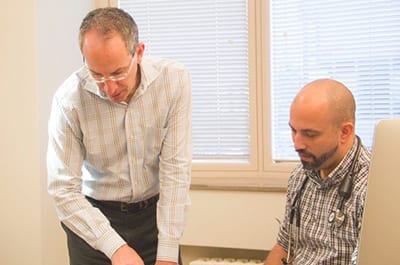“Mommy, my tummy hurts.”
It's 4am. Your 8-year-old son is shaking you awake. After you confirm that in fact, he is having abdominal pain and not just a bad dream, you head down to the local hospital emergency department to have him checked out.
Little did you suspect, a variety of factors beyond your control in the next 2 hours, having little to do with your son's medical condition, will determine whether your family has to declare bankruptcy or not.

Our health care system is broken. And a new study out of UCSF, published in this month's Archives of Internal Medicine, illustrates yet again just how broken.
The study looked at 19,368 cases of routine appendicitis, with a length of stay of three days or less, at 289 California hospitals.
A patient with severe abdominal pain is in a poor position to determine whether his or her physician is ordering the appropriate blood work, imaging, or surgical procedure. Price shopping is improbable, if not impossible, because the services are complex, urgently needed, and no definitive diagnosis has yet been made. In our study, even if patients did have the luxury of time and clinical knowledge to “shop around,” we found that California hospitals charge patients inconsistently for what should be similar services as defined by our relatively strict definition of uncomplicated appendicitis.
The study documents an enormous discrepancy in what hospitals charge for appendicitis treatment, ranging from a low of $1,529 to a high of nearly $183,000. The median hospital charge was $33,611. The authors found that some of the variance was related to physician medical decision making and hospital-level factors, but nearly a third was “unexplained.”
Even as our government is moving to roll out health insurance to a wider customer base, more and more people in the United States are under-insured, leaving them exposed to the highly arbitrary and often extraordinary costs of emergency medical care, a situation where they cannot “shop around” and consider the costs prior to accepting treatment.
At the same time, many are unaware that their personal physician, who knows them well might consider the impact of costs on their family and future, no longer sets foot in the hospital, leaving them at the mercy of emergency physicians and a new specialty of “hospitalist” physicians who are not incentivized to consider the impact of diagnostic treatment decisions on their family's financial future.
In a country where medical bills are the leading cause of personal bankruptcy, and where health insurance policies are changing to expose individuals and families to higher percentages of their medical bills, these findings should alarm everyone.
My recommendation? Find a personal physician who can get to know you well, and who can advocate on your behalf (in real time) if you require emergency or hospital care. A high-tech Marcus Welby, M.D. Not only might you have better medical outcomes, but more predictable financial results as well.
If you're in San Francisco, you can find this kind of care at My Doctor Medical Group.









